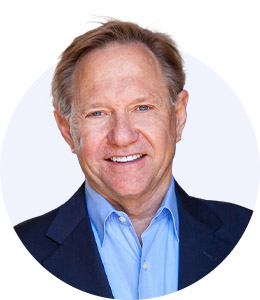“Less is more” is a common term; however, it is very uncommonly practiced. It seems there is a natural tendency to feel that the more actions taken, the better the results. Then there is the difficult decision of how much “less” is too much “less.” Like many things, at times, the statement can be taken too literally. Great leaders know how to find that balance. They also know how to prioritize which actions will have the most impact. These are leadership skills that are learned over time.
The “less is more” principle comes into play when we are implementing actions to improve performance. I have a long history in healthcare, with a focus on improving the patient experience. Over the years, I have been involved in helping organizations create ways to ensure patients receive excellent care. This includes being part of the development of a number of methods or tactics for care providers to use. These were created based on specific situations. Some are very scalable to like situations, while some are not.
John A. List is a world-renowned economist at the University of Chicago. In his great book The Voltage Effect, he describes what a good idea looks like and also explains how to identify a good idea that can be scaled. A person or company can have a great tactic that works well in their company or even in part of their company, yet it’s not able to be scaled. At times, the desire to scale can lead to poorer results, not better ones. I highly recommend John List’s book.
With scaling, there are times when methods that should work may not due to other factors that are present in a particular situation. For example, it could be there are too many new employees, thus experience is lacking. This is very common. Or it could be that the leader does not have the experience needed for implementation. It could be that the needed compliance is not in place.
I was with an organization that wanted to improve. They had done their research. They showed me a list of many tactics that had been written about and were shown to improve performance. They shared that they had been expecting the managers to implement the tactics; however, the results were not what they hoped. They asked for my feedback. I suggested they take the list of tactics and ask the managers which one they feel makes the most sense and can be done consistently. The first response was, “But there is a lot of pressure to get better results.” I said, “Yes, however, what you are doing is not working.” My experience is to implement one or two actions and do them well. Sometimes that is enough; at minimum, it will make things better. Then when one is confident the action is being done on a consistent basis, another one can be added.
Too many actions lead to difficulty in execution. I was with senior executives who wanted to look at implementing more actions. In studying the organization’s performance with the actions that had already been put in place, it was discovered that people were doing them only about 50 percent of the time. The recommendation was to not add any actions—in fact, to reduce them. In other words, let’s increase compliance first. Then we will have a better idea on the impact of the actions. A good diagnosis is important.
Most people have good intentions, which is why we have a tendency to try to do so much. But even the best of intentions cannot achieve what was hoped for. At times, taking too many actions can make things worse, not better.
An example is rounding on employees. The goal of rounding has always been to create and build a strong relationship between leaders and employees. Over the years, more and more questions have been added for leaders to ask. Then checklists came about, and then documentation software. All of these items were put into place with good intentions around follow-up, staff recognition, safety, and so forth. However, they can make what was intended to be a relationship-building tactic feel like a transaction to the employee—in other words, “I am doing this only because I have to.”
A key to leading is the ability to create meaningful relationships. This leads to achieving the desired organizational, departmental, and personal outcomes.
It comes down to being authentic, choosing the best tool or technique, and being consistent in implementing it. And it also means not overwhelming people with too many actions at once. Great leaders know that less is more…and less done well is truly a game changer.







